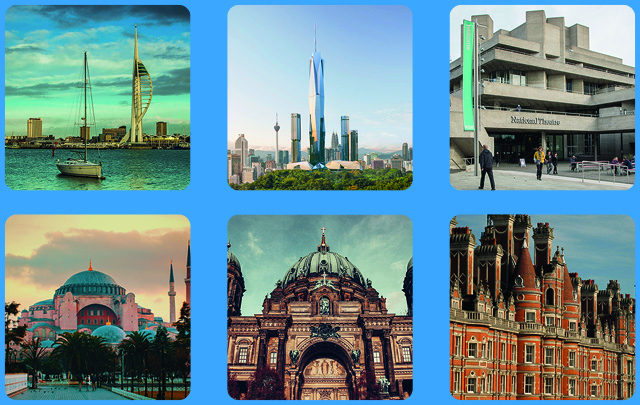Our favourite building series is now in full swing. Last week we started our favourite building series, where we asked the MRG team to pick their favourite building. This week we are travelling through time with a mosque from the year 537 all the way through to the tallest building in Malaysia which is currently in its final stages of being built.
The Lyttelton Theatre, National Theatre, London
The Lyttelton Theatre is my favourite of the three auditoriums in the National Theatre. It is a prime example of the Brutalist architectural movement. The stark, uncompromising concrete structure was once described by Prince Charles as looking like “a nuclear power station” – but to me it’s a perfect example of how the past saw the future. Designed to resemble an “Urban landscape”, as a child it looked to me like one of the Star Wars Imperial Destroyers. As an adult it’s the gateway to cultural delights.
Merdeka PNB 118, Malaysia
My favourite building is Merdeka PNB 118, the highest building in Malaysia, and a great feat of modern architecture. The official name of the tower is Merdeka PNB 118 or simply Merdeka 118. Merdeka means Independence Day in Malaysian, the name of the tower commemorates the independence of Malaysia, additionally the tower has been built on the site of the former Merdeka Park. PNB is abbreviation of Permodalan Nasional Berhad, which is Malaysia’s biggest fund management company and the owner of the tower.
The tower was formerly known as KL 118 as it is located in Kuala Lumpur and will have 118 floors. I find it interesting how it has been known under so many names, some other common names are Menara Warisan Merdeka, which means Heritage of Independence in English, and PNB Headquarters, as the tower will become the new headquarters of PNB Group.
Spinnaker Tower, Portsmouth, UK
One of my favourite landmarks would have to be The Spinnaker Tower in Portsmouth, England. It is the centrepiece of the redevelopment of Portsmouth Harbour, which was supported by a National Lottery grant. The tower’s design was chosen by Portsmouth residents from a selection of three different designs in a 1998 public poll. It has three viewing platforms one on top of the other at heights of 100m, 105m and 110m.
The Spinnaker Tower reflects Portsmouth’s maritime history through its design and is named after a spinnaker, a type of sail that balloons outward. The tower was opened on 18th October 2005 and attracts millions of tourists a year, which has increased Portsmouth cities global awareness and helped put Portsmouth on the map.
Hagia Sophia Grand Mosque, Turkey
An architectural marvel, that started life in 537 originally as a church, it was then a catholic cathedral and finally a mosque. It’s a standing reminder to the religious changes played out within the region. I find it the kind of building that takes a long time to absorb and the first time you see it you are not sure what you are looking at! But it is truly magnificent. As well as admiring the inside the best place I find to look at this building and figure it all out is from a roof terrace.
Berlin Cathedral, Germany
By Hayley Wood
I’ll never forget the first time I saw Berlin cathedral. I couldn’t believe how big, beautiful and breathtaking it was. Every time I go to Berlin, I always sit at a nearby restaurant, have some lunch (and a glass of wine of course!) and admire it in all its glory. I’ve even climbed the 270 steps a few times to view the city from the dome, which was actually destroyed during World War II and rebuilt in 1975.
Founders Building, Royal Holloway, UK
By Karl Bostock
The building was built as a purpose-built institution to house the UK’s first dedicated women’s further education institution commissioned by Queen Victoria in 1874. So that the building stood out they decided on French Renaissance style with inspiration taken from Château de Chambord. William Henry Crossland was the architect for the building and because of this it was a truly inspiring place to study as its style harkened back to an older time and continental style, whilst representing progressive thought and change during a time considered for its conservatism.
Missed Week 1? You can read all about it here.
Missed Week 2? You can read all about it here.
Missed Week 4? You can read all about it here.
Missed Week 5? You can read all about it here.
Missed Week 6? You can read all about it here.
